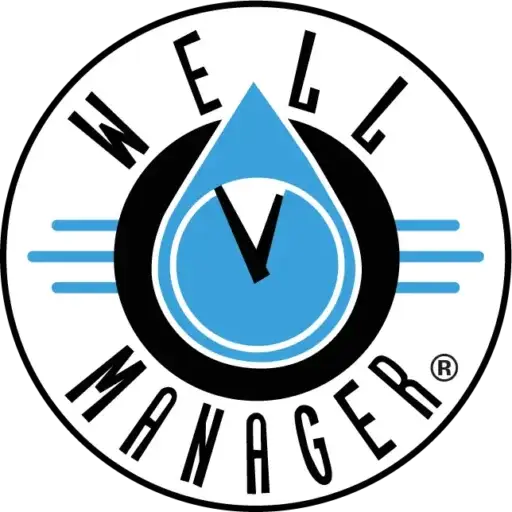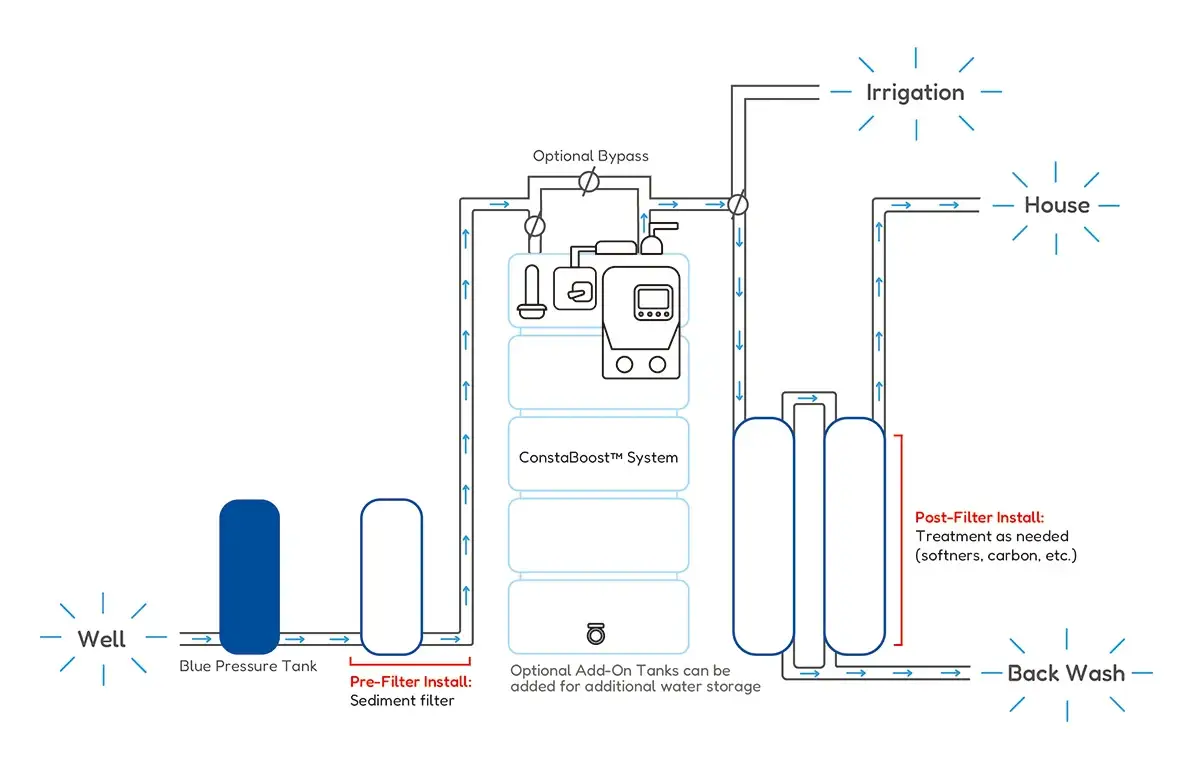How to Increase Water Pressure on a Low-Yield Well (Without Scheduling Your Life)
Saturday mornings shouldn’t feel like air traffic control. If you’ve ever negotiated who showers first, whether the dishwasher can run, and when the laundry is “allowed,” you’re not imagining the strain; your home is trying to meet a big, short burst of demand with a small, slow source of supply. That mismatch is exactly why low water pressure shows up right when your family needs water the most.
Here’s the good news: you can solve how to increase water pressure in a way that also solves the real problem, such as peaks that overwhelm a low-yield well, so you stop rationing, monitoring, and worrying. Instead of teaching everyone to use less water at the busiest times, a modern system quietly stores water ahead of time. It uses a water pressure booster to deliver steady pressure whenever you turn the tap. Your life stays the same; the system does the adjusting.

What the Old Playbook Suggests — And Why You Shouldn’t Have To Follow It
Conventional guidance for low-yield wells follows a predictable path: throttle peak usage, buy conservation fixtures, add intermediate storage with extra plumbing, or try changing the well itself. These steps can help in the absence of an integrated management system—but they come with trade-offs that keep you living on a schedule. Here’s how each one stacks up against a storage-plus-booster approach that makes the workarounds unnecessary.
- Stagger chores and shorten showers:The traditional fix is to spread laundry across the week, move some showers to the evening, and avoid simultaneous uses during busy hours. It’s done because a low-yield well can only produce so much during a peak window, leaving you short when the household’s needs overlap. That’s not a way to live. A system that banks water before the rush lets you run the morning you actually have, not the one your well can tolerate.
- Buy water-saving devices (and still plan your day): Conservation fixtures, like front-loading washers, low-flush toilets, and low-flow showerheads, can cut household use, but they don’t change the fact that peaks arrive in bursts. You’ll still run into low water pressure if several fixtures operate at once. Adding storage so peak volume is ready in advance, then using a water pressure booster to hold comfortable PSI, means you keep your convenience while the system handles the constraint.
- Oversize the pressure tank (but only 20% is usable):A pressure tank automates plumbing but offers a limited usable drawdown. Simply upsizing it won’t cover a real morning peak. Storing actual water in an atmospheric tank, then boosting it, gives you meaningful peak capacity and consistent pressure.
- Install intermediate storage with two pumps (and care for it):A large, non-pressurized tank with a second pump and freeze protection works because many low-yield wells can trickle around the clock. You capture that trickle and spend it when life gets busy. The right principle, refined into a purpose-built package, means you don’t have to manage valves, floats, or seasonal adjustments yourself.
- Widen or deepen the borehole (expensive, unpredictable, and risky): Tryingto add borehole storage by drilling wider or deeper may work on paper, but water levels swing with seasons and drought. You risk tapping poorer water quality, face high costs, and still have no guarantee of improvement. It’s a gamble when you could stabilize daily life by managing what you already have.
How to Increase Water Pressure Without Compromise
If you’re tired of rules and reminders, this is the system logic that frees you from them. It addresses the root cause (peak bursts vs. slow supply) and the symptom (weak, inconsistent pressure) at the same time without asking you to change how you live.
- Store water ahead of demand.Harvest your well’s steady trickle into atmospheric storage sized to your household, creating a dependable buffer for the busiest times.
- Use a water pressure booster for the feel you want.A dedicated booster pump supplies the house from storage at a stable target PSI, so showers, sinks, and laundry can overlap without the telltale pressure sag. You’re no longer “riding” the well; you’re drawing from the reserve you’ve already banked.
- Protect the well with smart limits.Controls keep the well pump’s rate slightly below the proven yield and add low-water cutoffs so you can’t over-pump during refills. This preserves the aquifer, extends pump life, and—most important—means you never have to watch gauges or schedule showers to “help” the system.
Side-by-Side: Coping vs. Living
- “Stagger everything during peaks.” → Use water when you want.Storage covers bursts; the booster holds pressure.
- “Spend on conservation fixtures.” → Stop rationing.Efficiency is fine, but the real win is decoupling peak demand from the well’s slow yield.
- “Try a bigger pressure tank.” → Store real volume.Atmospheric storage plus a booster solves both volume and pressure.
- “Install intermediate storage (DIY complexity).” → An integrated, turnkey package.Same physics, engineered so you don’t babysit components.
- “Deepen or widen the well.” → Avoid drilling risk.Results are uncertain and often costlier than storage-plus-booster without guaranteeing better mornings.
What This Means for Your Home
With the right design, low water pressure stops being a daily storyline. Morning showers feel the same even when the dishwasher is running. Laundry starts when you have time, not when your well does. Guests don’t need instructions. And you don’t track gallons in your head, because the system is quietly collecting, protecting, and delivering water on your behalf. You don’t have to live like this; you can live normally, and let the system do the worrying.



